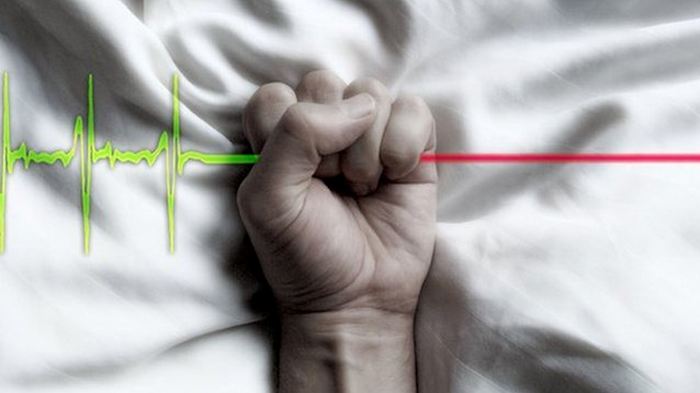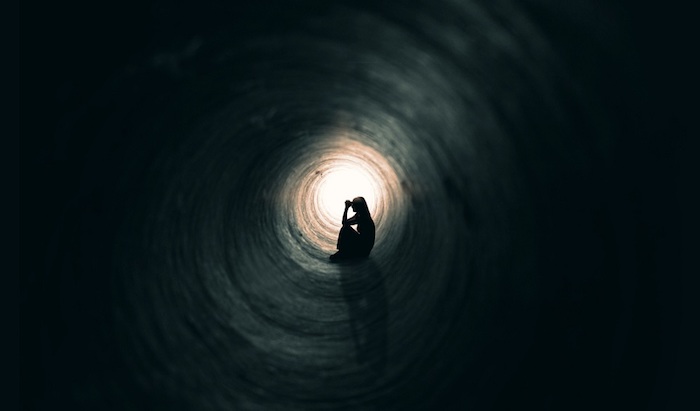
By Amy Molloy
‘They say you’ve got three months to live.” These were the words I spoke to my then-fiancé when I was 23 years old after learning that his cancer – malignant melanoma that spread to his liver, lungs, pancreas and brain – was likely to be fatal.
At the time, my only experience of “the end” was watching my parents disappear into a room where my grandparents were lying, and of seeing an empty rabbit hut at the end of our garden after the loss of a pet.
When I was 17 years old my father was paralysed from Hodgkins Lymphoma but, after a stem cell transplant, he defeated the odds and made a miraculous recovery. So, I had faith in the power of modern medicine over mortality.
However, not this time.
I was practically still a child when a doctor ushered me into a private room, whilst my soon-to-be husband, Eoghan, was in a chemotherapy session, and revealed his prognosis. I asked if I could be the one to tell him, and they readily agreed.
Perhaps, even doctors will do anything to avoid saying the T-word. Terminal.
In the next three months, I had a crash course in end-of-life conversation: the jargon, the euphemisms and the social awkwardness.
I froze with fear when I walked into the chemo ward and heard another patient ask my partner, “Have you ever thought about euthanasia?” But, in a way, that was better than the wall of silence.
After my husband died three weeks after our wedding day, even my closest friends evaporated or became stiff in my company. In the next few months, as I rebelled against my grief – drinking too much and becoming promiscuous – nobody dared challenge me or raise the topics I ached to discuss.
What on earth are you doing?
Do you really think this is helping you?
How does it feel to marry a man who is dying?
…Do you want to die too?
Do you know what to say when a friend’s loved one dies? Have you thought about the day your own parent, partner or best friend may no longer be visible? How would you discuss it, in a way that would be supportive, constructive, and even light-hearted?
If you don’t know the answer, you’re not alone.
A new study from the Royal College of Physicians in the UK has urged medical professionals to improve their bedside manner when it comes to discussing death, after identifying that “timely, honest conversations” about patients’ futures are not happening. However it’s not only doctors who need to become more comfortable with these conversations.
It’s been suggested that millennials are the generation most fearful of death, unlike our grandparents, raised through world wars, who learnt that life can be short. As medicine advances and life expectancy increases, we prefer to think of death as our “future self’s problem”.
But is postponing the inevitable increasing our terror of it?
As psychologists report a rise in young people presenting with anxiety linked to death, it’s time for honest, open, educational conversations about loss of life, and how it can look. Its not enough to be aware of Facebook’s ‘death policy’, warn experts.
“Death is still a certainty even if people are living longer,” says clinical psychologist Renee Mill from Sydney’s Anxiety Solutions CBT.
“When treating anxiety, exposure is what works and avoidance increases the problem. Talking about death or visiting a dying person will decrease your fear of death and make it easier to accept that it is a part of life. Every funeral we attend, no matter how hard, actually helps to reduce anxiety in this way too.”
And, it’s never too early to think about the end. “Planning in life is important,” says Mill. “We plan our careers, we save, we want to buy property – end-of-life is another part we need to plan. It means we get our wishes fulfilled and gives guidance to our loved ones who otherwise have to pick up the pieces.”
In a good way, change is happening. Since 2017, the multimedia project We’re All Going to Die has encouraged people to embrace their immortality and use it to empower their lives, through educational films and festivals.
The award-winning podcast, GriefCast, hosted by comedian Cariad Lloyd whose father died when she was a teenager, sees entertainers speak with startling honesty – and surprising humour – about death, from the logistics of palliative care and funeral plans to the long-term effects of bereavement.
When we can talk openly about death, we may also increase our chances of reducing suicides. To help people to help each other, Lifeline offer an online course in QPR – the equivalent of CPR for people experiencing a suicidal crisis.
As part of the training – which only takes an hour and costs $10 – people are urged not to tiptoe around the conversations. Instead, be direct: “Do you feel like you want to die?”
In our social circles, we need to discuss worst-case-scenarios. Do you have a will? Do you have death insurance? Are you an organ donor? As an Australian immigrant living 16,000 kilometres from my parents, I always have enough money in my bank account for an emergency flight home. Because, nobody lives forever.
It’s confronting but it’s necessary
During my book tour, I cried on stage for the first time whilst discussing my journey from a 23-year-old widow to a 34-year-old wife and mother of two. Because, for the first time in a decade, I have reached a place where I can talk about my experience of death – and really be heard.
I shared the reason I light a candle in my bedroom every evening and say a prayer: help me to act from a place of love, not fear.
“If my dad’s cancer comes back, on that day I will light that candle,” I said, “If my husband, who is here with my newborn, dies and I am widowed again then I will light that candle to remind myself to act from a place of love.”
We need to talk about death to be active participants in the full spectrum of life: so we can decide who to be when a doctor pulls us into a private room, when we answer the phone to bad news, when we say goodbye for the last time.
We are so scared of death, we don’t discuss what an honour it is to watch someone die; to be present – really present – when someone takes their last breath, to lean in and breathe them in, to put your head on their chest as their heart stops beating and kiss their skin as it transforms.
I hope you all have that experience one day.
We are not meant to say that, but we should.
Complete Article ↪HERE↩!





